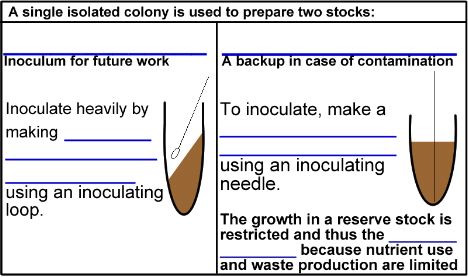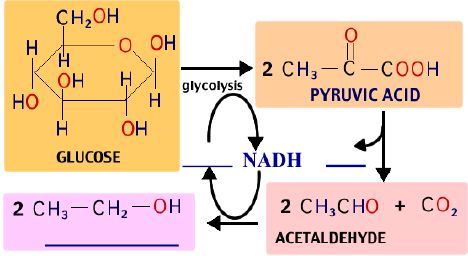LECTURE #18: IDENTIFICATION OF UNKNOWNS I
I. Maintaining culture purity
A. After isolating a pure culture it is important to _____________________. This is difficult because the more transfers made, the greater the likelyhood of contamination.
B. Working and Reserve Stocks

II. Procedure - using _____________________________
A. record ________________________.
B. inoculate a __________________________.
C. perform a _________________________.
D. inoculate a _________________________.
III. Preparation of Wine
A. Wine is made from a _________________
= juice of anything that can be fermented including ______________________________________or
even flowers.
B. Fermentation
1. An _________________________________________________
that uses an organic molecule as the final ___________________________________
in order to _____________________________________ ______________________(NAD+).
This allows glycolysis to continue and _________ to be produced!
2. In wine fermentation, Saccharomyces cerevisae var. ellipsoides
(wine yeast) enzymatically ________________________________
_____________________________ (glucose and fructose) to acetaldehyde
and then to __________________________.

C. The concentration of alcohol in wine is a function of the
_____________ ____________________
in the must and the ________________________
________________________. That is, the yeast produce alcohol
until they can’t handle any more (generally 12 – 14%).
D. Factors affecting the taste of wine
1. The ____________________
of fruit
2. The inclusion of ____________________________ (white vs. red
wine)
3. The fermentation _________________.
4 . The _________________________________
in the must
5 . The _________________
of yeast
E. The procedure
1. Add a _______________________________________________
to sterilized or pasteurized juice.
During the early growth phase, yeast grow _____________________.
2. Later, as the O2 is used up, anaerobic conditions result
and ___ _____________________________.
3. The amount of ethanol produced can be measured by comparing _________________________________
readings.
|